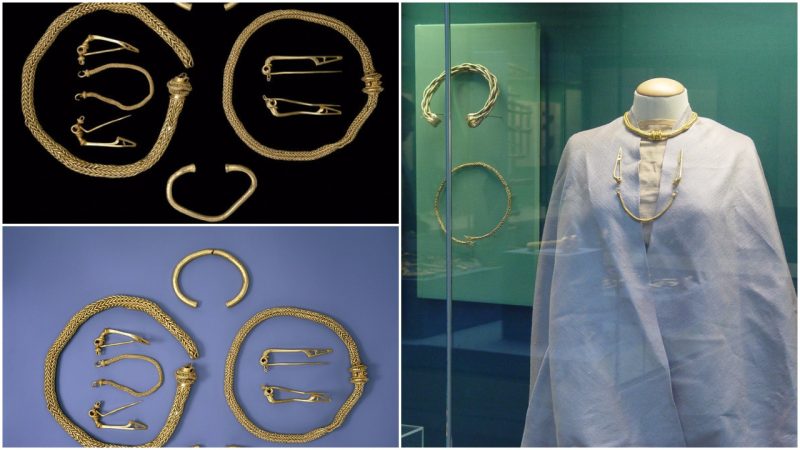The find was described as “the most important discovery of Iron Age gold objects” for fifty years. The hoard was discovered near Winchester over a series of trips to a farmer’s ploughed field in September, October, and December, 2000 by retired florist and amateur metal detectorist Kevan Halls.
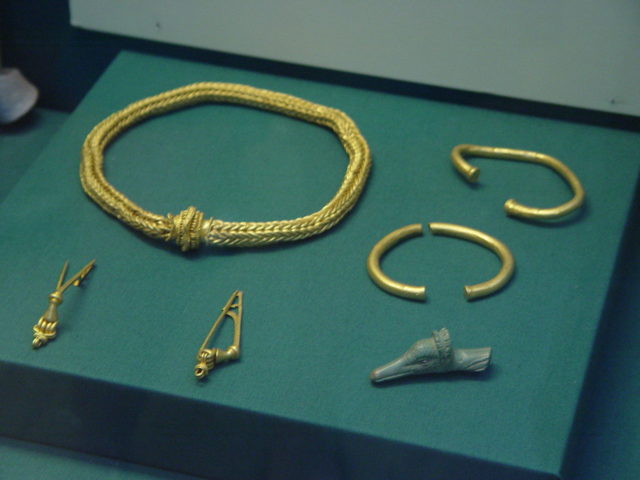
The first discovery, which was of the brooches,was reported to the Portable Antiquities Scheme, and archaeologists attached to the British Museum were able to excavate the find site to ascertain the historical context of the find. No evidence of a settlement or temple, by way of architectural remnants, was found. It was more likely that the hoard was buried “on top of a small hill… covered with trees”.
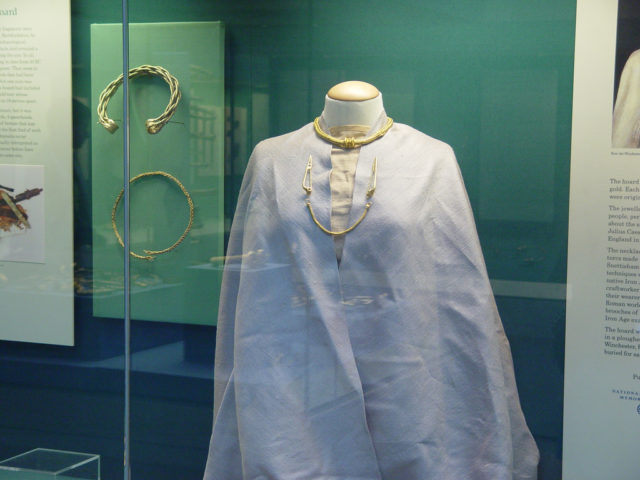
The hoard was declared treasure following a coroner’s inquest, and later valued at £350,000,which was shared between finder and landowner under the Treasure Act 1996 – the highest reward granted under that Act at that time. It was also the first time the context of a find was investigated by the British Museum in conjunction with said Act.
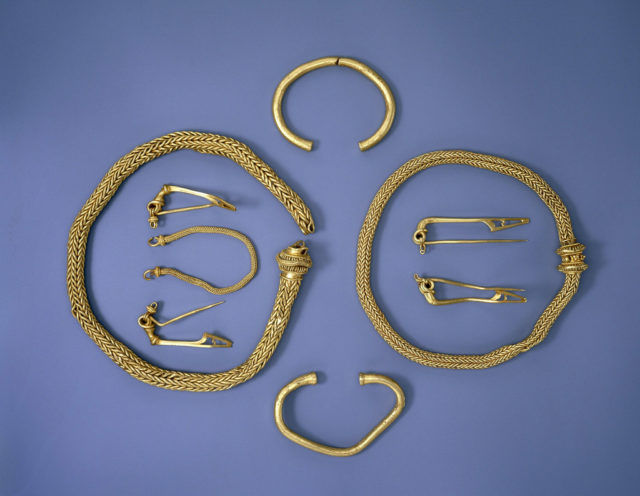
The hoard contains two sets of gold jewellery; each includes a torc, a pair of brooches, or fibulae,linked by a chain (of which only one chain was found), and a bracelet (of which one was broken in half). They were all made with a very high gold content – between 91% and 99% – determined by X-ray fluorescence tests at the British Museum.The total weight of the hoard is 1,158.8 g (40.88 oz) (37.25 troy ounces). It is dated from 75–25 BC, which places it in the Late British Iron Age.
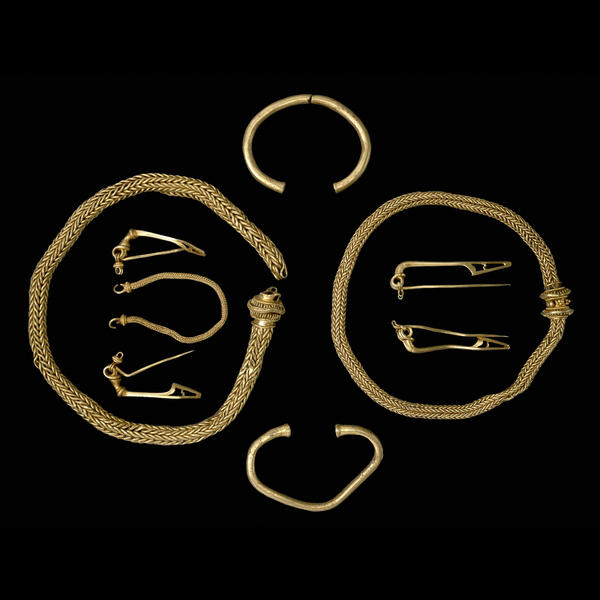
All of the brooches are of a bow type, with two being further classified as Knotenfibeln (“interlace fibulas”), typical of La Tène style. The chain is of gold wire, interlinked, with a hook at either end to attach to each pair of brooches. The bracelets are, or were in the case of the broken one, ring shaped. The ends of the torcs exhibit some ornamentation (granulation), and in the case of the smaller one, filigree. Both granulation and filigree had been attached by diffusion soldering.One of the torcs is larger than the other, so it is assumed that each was intended for different sexes, and that the items had been worn.
